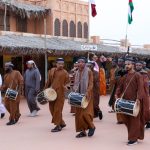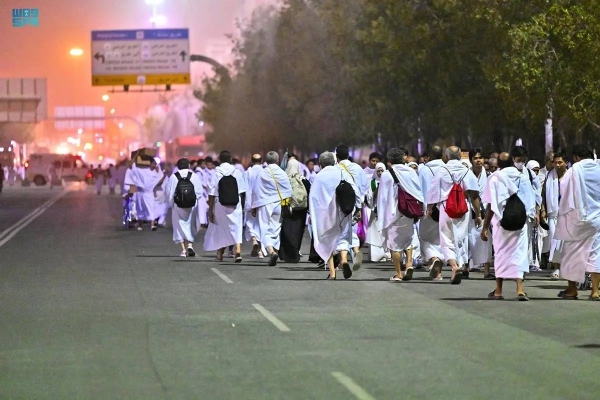Every year, on the ninth day of Dhul-Hijjah, the Arafat plain in Makkah welcomes millions of pilgrims for the Day of Arafat, a significant day in the Hajj rituals. As the pilgrims seek tranquility and divine mercy, they ascend Mount Arafat and immerse themselves in the solemnity of the occasion. The pilgrimage starts on Saturday morning as the pilgrims move from Mina to Arafat for the major ritual of standing (Wuquf). After combining and shortening the noon and afternoon prayers, they proceed to Muzdalifah to spend the night before heading to Mina to continue the Hajj rites. Spanning approximately 33 square kilometers, Arafat hosts over two million pilgrims each year, with the Saudi government ensuring their comfort, security, and exemplary service without hardship.
The geographical characteristics of Arafat include its flat terrain surrounded by a chain of mountains, with Mount Rahmah (the Mount of Mercy) located to the north. This mountain features a small, flat-topped hillock formed from large and hard black stones. Pilgrims eagerly anticipate standing by Mount Rahmah in Arafat, as it is the site where Prophet Muhammad delivered his Farewell Sermon. Pilgrims engage in fervent prayers and supplications, seeking mercy and forgiveness from Allah. Namirah Mosque, the second largest mosque in the Makkah region after the Holy Mosque, has witnessed significant expansions during the Saudi era, particularly under King Abdulaziz bin Abdulrahman, to accommodate approximately 400,000 worshippers.
The expansions at Namirah Mosque included extending its length and width, covering an area of over 110,000 square meters, with an 8,000 square meter shaded courtyard. The mosque features six 60-meter-high minarets, three domes, and ten main entrances with 64 doors. It also houses an external broadcasting room for live transmission of the sermon and prayers on the Day of Arafat via satellite. Situated on the historical site where the Prophet delivered his sermon, the mosque was originally built during the early Abbasid Caliphate in the mid-2nd century AH. It is located west of the Arafat area, partially extending into the Wadi Uranah, where the Prophet prohibited standing except for Arafat.
The Ministry of Islamic Affairs has completed technical works at the mosque, including maintenance, operations, cleaning, installing luxury carpets, upgrading air conditioning and air purification systems, maintaining generators, and ensuring all services meet the highest quality standards. These efforts aim to facilitate a serene and smooth pilgrimage for all attendees at the Namirah Mosque in Arafat. With its significant expansions and modern facilities, the mosque offers a comfortable and spiritual experience for pilgrims seeking divine mercy and forgiveness on the Day of Arafat.
In recent years, the Saudi government has demonstrated its capability to accommodate even greater numbers of pilgrims at Arafat, providing them with comfort, security, and exemplary service. Pilgrims from around the world eagerly anticipate the opportunity to visit Mount Rahmah, emulate the Prophet’s actions, and engage in prayers and supplications. As they ascend Arafat and stand in collective worship, surrounded by the beauty of the landscape and the solidarity of their fellow pilgrims, they seek mercy and forgiveness from Allah.
Overall, the Day of Arafat holds great significance for pilgrims on the Hajj journey, as they gather in Arafat to fulfill a major ritual and seek closeness to Allah through prayers and supplications. With the enhancements made to Namirah Mosque and the infrastructure at Arafat, pilgrims can experience a smooth and spiritual pilgrimage, focusing on their worship and seeking divine mercy and forgiveness. The Saudi government’s efforts to accommodate pilgrims at Arafat demonstrate their commitment to facilitating a memorable and transformative Hajj experience for all attendees.











